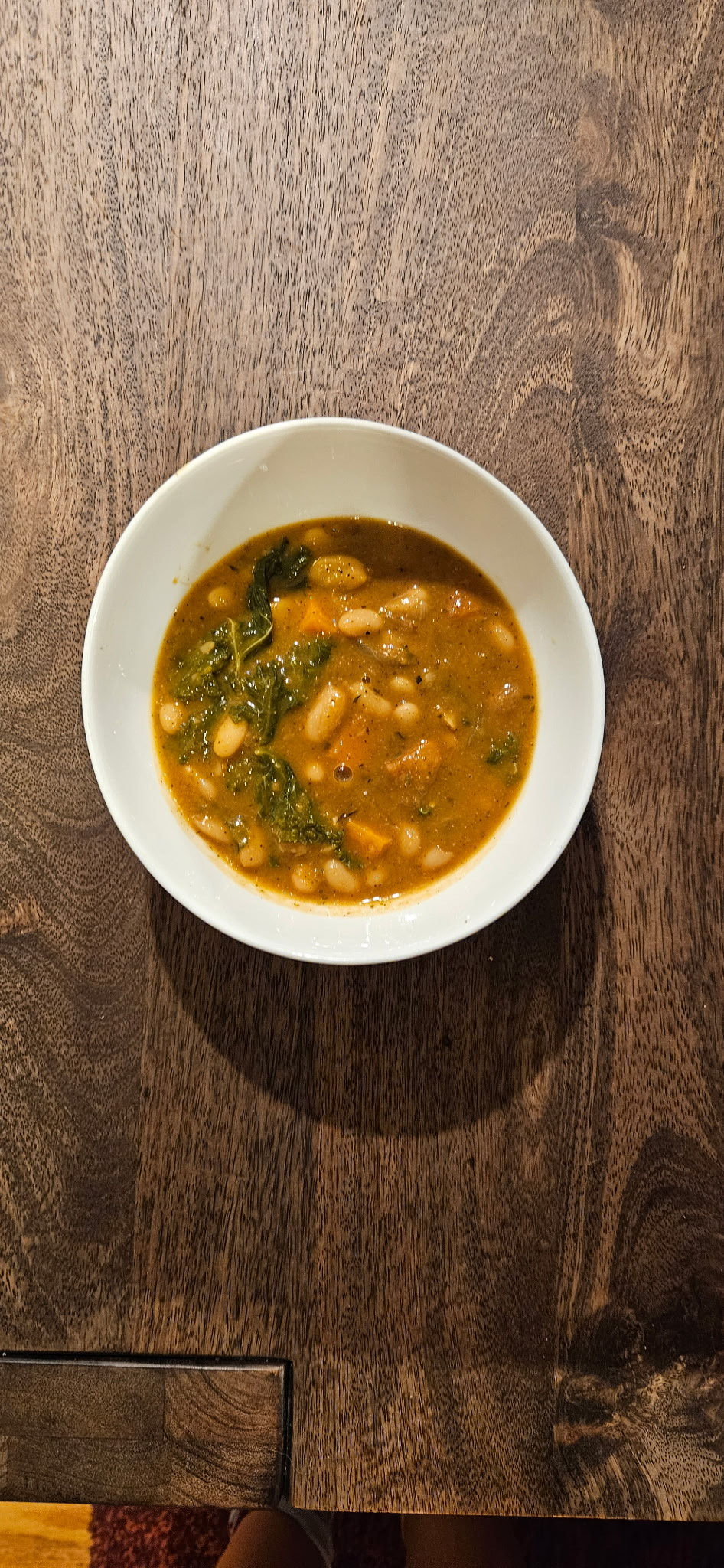"Beef" Bulgogi Rice Bowls
- maiabergesv
- May 6
- 4 min read
This dish was actually one of the first dishes that I created when I decided to stop eating meat, over 9 years ago. I remember someone telling me that it was a bad idea because I was "missing out" on so many amazing meat dishes, especially beef bulgogi. When they said that I was dedicated on making a meat-less version that was just as good as the real thing, if not better. Years later and I still make this dish at least once a month, it's so easy to make in large batches perfect for families, or in my case for many guests at Miriam's Kitchen.
Here is also some information on the nutritional breakdown of this dish! For this recipe I decided on a variety of different vegetable toppings that would increase the amount of nutrients, fiber, and vitamins for this dish.
Peppers (especially red, yellow, or orange):
- Vitamin C – supports immune health and helps absorb iron from the beef and spinach.
- Antioxidants – like beta-carotene and other carotenoids, which help fight inflammation.
- Fiber – good for digestion and keeping you full
Spinach:
- Iron – helps transport oxygen in the blood (and pairs well with vitamin C from peppers for better absorption).
- Folate – key for cell function and repair.
- Vitamin K – supports bone health.
- Magnesium & potassium – important for muscle and nerve function.
Onions:
- Antioxidants – especially quercetin, which has anti-inflammatory effects.
- Prebiotics – support gut health by feeding good bacteria.
- Flavor enhancer – which means you might use less salt.
Mushrooms:
- B vitamins – like riboflavin and niacin, great for energy metabolism.
- Selenium & copper – minerals that support your immune system and antioxidant defenses.
- Umami flavor – which can make the dish more satisfying without needing extra fat or salt.
This dish also includes a complete protein! While Rice by itself is not a complete protein, some fake meat brands can actually be a complete protein by itself (as many are made with different plant proteins like soy and pea protein). When paired with rice and a variety of vegetables that each have different health properties including different sources of vitamins, minerals, and antioxidants.
Lastly, while some fake-meat brands can be a bit skeptical to use, they are still significantly better for you than regular meat, despite the amount of processing. Processing food isn’t always a bad thing. The main idea is just not adding anything sketchy or taking away the good stuff. Like with cacao beans—when they’re processed, the cocoa butter (which has a lot of saturated fat) gets taken out, and you’re left with cocoa powder that actually has some solid health benefits, like anti-inflammatory flavanols. So in that case, processing makes it better. But ultra-processed foods are a different story. That’s when things get taken to the extreme to make stuff like chips, soda, and candy taste super good but not be great for you. They usually have way more sugar, fat, and salt—and not much fiber or real nutrients. That’s why snacks like fruit, veggies, or nuts are usually a better move. While fake meat is highly processed, it has less saturated fat (linked to cardiovascular disease), so it can actually improve your diet significantly compared to regular meat. In fact, GFI stated: “The average American gets less than half their recommended daily value of dietary fiber, but subbing plant-based meat for conventional can help close this gap. A 2021 randomized controlled trial found that replacing conventional meat with plant-based meat about five times per week increased participants’ weekly fiber consumption by an average of approximately 19 grams and increased fiber-metabolizing pathways in their gut microbiota.”
So in conclusion, this dish is not only amazing and nutrient dense but is also better for you compared to eating this dish with regular meat, which is also better for the environment. I hope you enjoy is as much as I do!
Ingredients:
½ cup brown sugar
2 tbsp agave
2 tbsp sesame oil
8 minced garlic cloves
1 tsp ginger
1 tsp dried chili flakes
1 tsp black pepper
4 tsp sesame seeds
2 cups sushi rice
1 container brown/white cremini mushrooms
2 packages plant based meat (beyond is the best)
1 cup frozen or fresh corn
2 large carrots, shredded
1 cup spinach
2 red bell peppers
½ tsp onion powder
½ tsp garlic powder
1 yellow onion
4 tsp gochujang
¼ tsp salt
¼ tsp black pepper
Recipe:
The Base:
Begin to cook 2 cups of rice
How to Cook Your Rice:
Pour 2 cups of rice into a bowl
Rinse the rice 5-6 times until water comes out fully clear and no longer foggy from the starch
Either cook your rice in your rice cooker or cook on stovetop: the water to rice ratio is 1:1
2. Sauce It Up: <Mix together these ingredients in a bowl>
½ cup brown sugar
2 tbsp agave
2 tbsp sesame oil
8 minced garlic cloves
1 tsp ginger
1 tsp dried chili flakes
1 tsp black pepper
4 tsp sesame seeds
3. Cook the Meat
Slice 1 yellow onion and 1 large container of cremini mushrooms
Cook in a pan with some oil until vegetables are soft
Add in 2 packages of plant based meat
Begin to cook everything until well combined and add a dash of garlic powder, onion powder, salt, and pepper
Once the meat is brown, add in the bulgogi sauce
4. Toppings Time
Feel free to get creative here
Make sauteed spinach and sauteed peppers
Also saute some corn
"Optional*: this would make it not vegan, but adding a fried egg on top is also an amazing addition adding additional richness to the dish
Shred some carrots
Make spicy gochujang sauce: Put 4 tbsp of spicy korean pepper paste into a bowl and add 6 4 tbsp of water as well to make the sauce runny
5. Get Ready to Enjoy!!
Add in ½ cup of rice -> add furikake onto the rice (optional)
Add in bulgogi meat
Add on different vegetable toppings
Sprinkle with roasted white sesame seeds

"Beef" Bulgogi Rice Bowl Picture




Comments